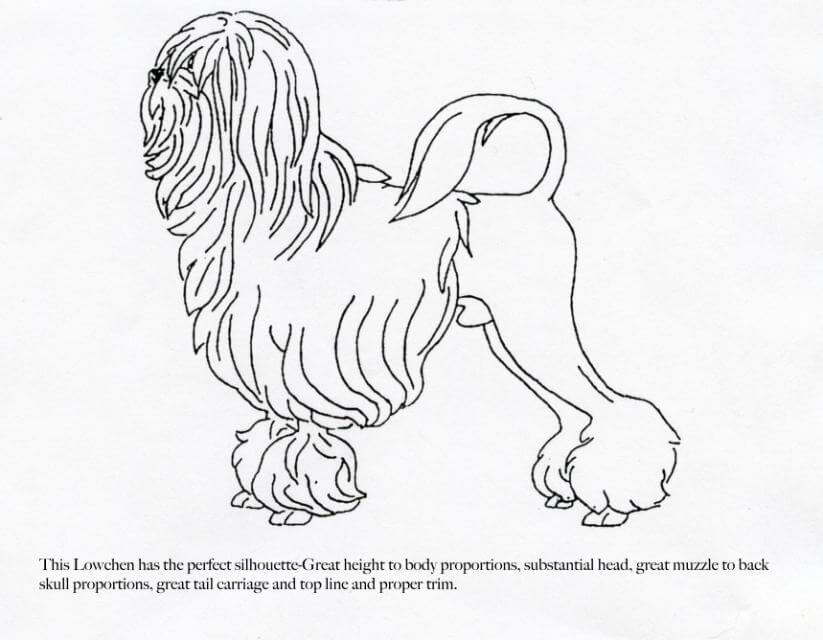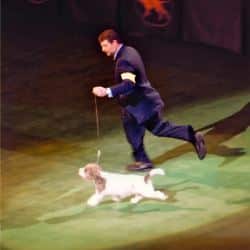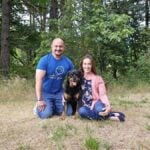


Home » Understanding & Judging The Löwchen
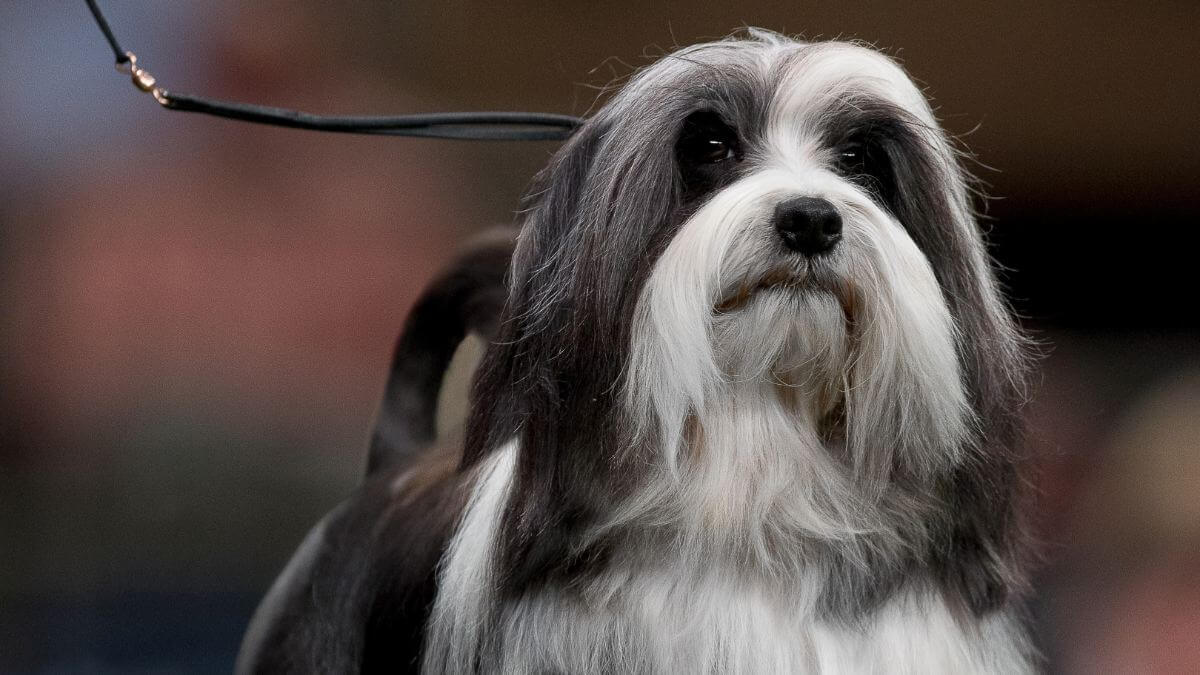
This article was originally published in Showsight Magazine, November 2013 issue.
The first thing to realize about the Löwchen during the evaluation process is that it is a “silhouette” breed. What’s meant by that is that the standard clearly defines and puts emphasis on body and height proportions, and head and tail carriage. In proper balance, the Löwchen should be slightly off square as the standard calls for an 11 to 10 body length (from the prosternum to the point of buttocks) to height (at the withers) proportion. In doing the math on a 12″ dog at the withers that would allow for just 1.2″ longer in body (not back) than one is tall.
The head is to be carried high in both stature and movement and the tail is to take the shape of the handle on a teacup. A tail too tight (gay) over the back or too loose off the back is not only incorrect, but throws the “essence of the breed” off ever so slightly, giving a more generic look to the dog. I have always said that you should be able to paint any dog black and by defining certain characteristics you should be able to tell what breed it is.
Think about that as you judge the four setter breeds. A Löwchen in lateral movement should maintain the same look as one in stature, not dropping low to the ground in order to remain proportionate and balanced, with the head held high and the tail carried in the same fashion.
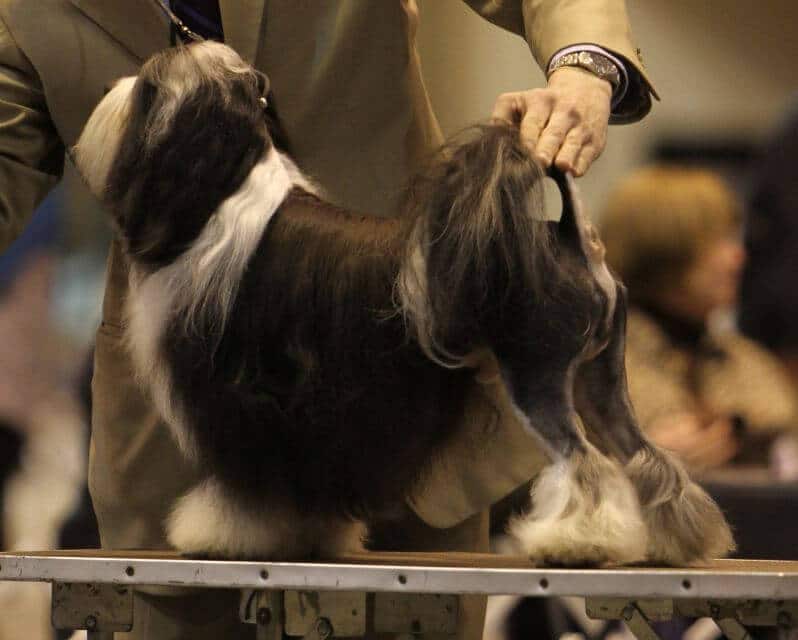
Another area of great importance is the head and expression. It is said to be the hallmark in breed characteristic. Similar to the height and body proportions the standard asks for a well-defined muzzle to head proportion, both being broad and of good substance. The muzzle is to be the same length as the back skull or slightly shorter is preferred. The eyes are dark, round, and large. Not like that of a Pug as they are too prominent, but more like a Bichon without the halos. Brown or Champagne-colored dogs can have lighter eyes. Combined with the proper broadness of skull and muzzle you will have a bright, alert, expressive, and well-constructed headpiece that will not be forgotten. The coat should be similar to that of a Maltese except not single-coated but very dense. Not too coarse like you will find on a Lhasa, but more fine and soft yet full, for a “flat coat” (no undercoat) is a severe fault as are wooly, wiry, and curly coats.
The only disqualification you will find in the Löwchen standard is for trimming of the coat. That includes both the specified trim as well as shaping and trimming of the long coat. Upon examination, one needs to simply lift the coat from the forequarters to see if the exhibit is clipped from the elbow down to the height of the hock in the rear. Very delicately move the hair off the toes to see that they are clipped to where dewclaws would be but not as far as a poodle. This creates a “cuff” or a bracelet over the feet.
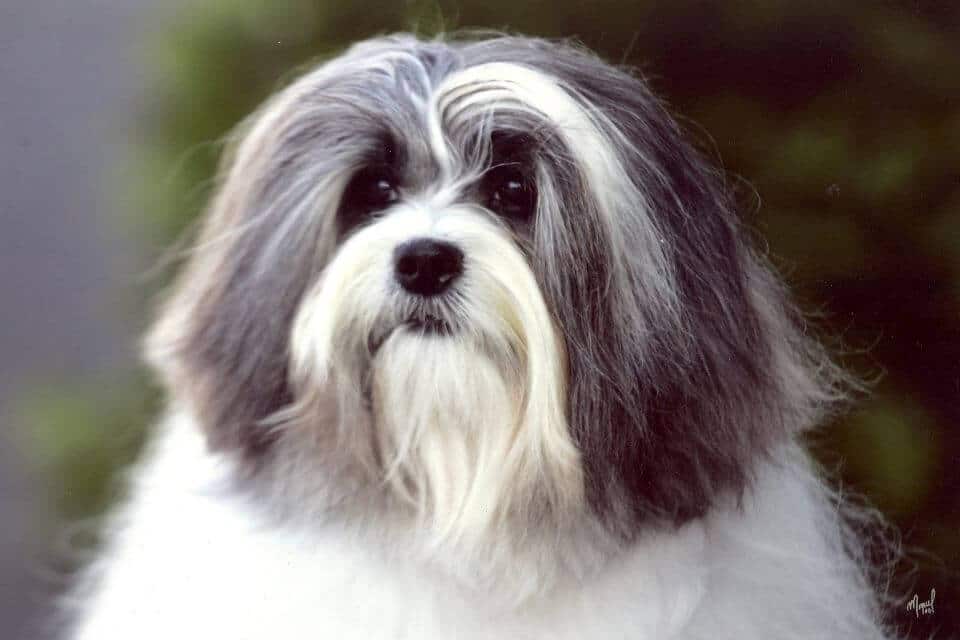
Be sure that the “ruff” or pack on the body starts at the last rib and continues down the body and hind legs to the hock. The tail is clipped halfway up from the base so there is a plume. It is extremely important to understand the difference between an adult coat and a puppy coat while evaluating trimming. A puppy will have a body coat that is full, off-standing, and all one length.
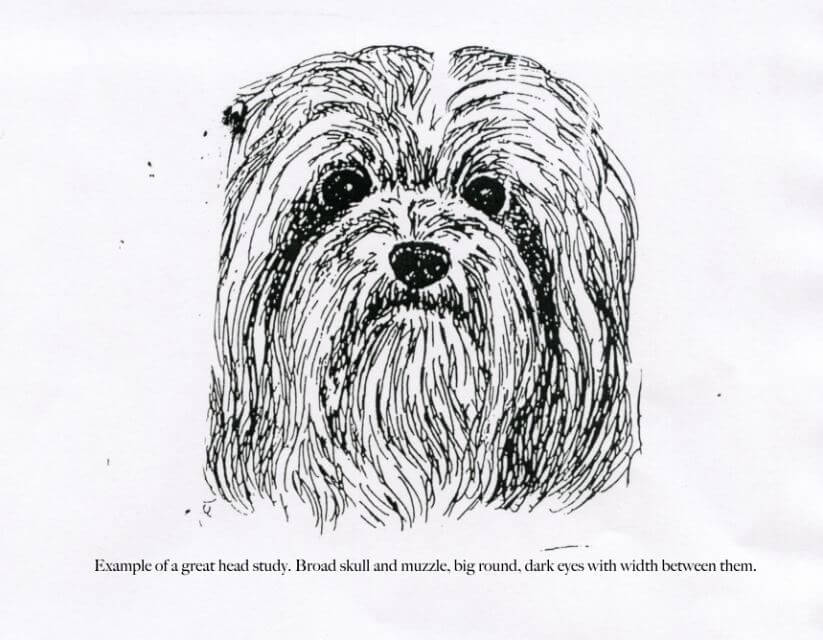
Giving the appearance that it is trimmed, but is most likely not. While the adult dog will have a slightly less dense coat with natural breakage, giving the proper look and lay of the coat with no evidence of trimming. As the hair on the cuffs grow, they will be most susceptible to breakage and expect some symmetry in the shape as natural breakage occurs. The movement of the Löwchen calls for an effortless open gait with good reach and drive and proper (high) head carriage. Much like that of a horse in an extended trot.
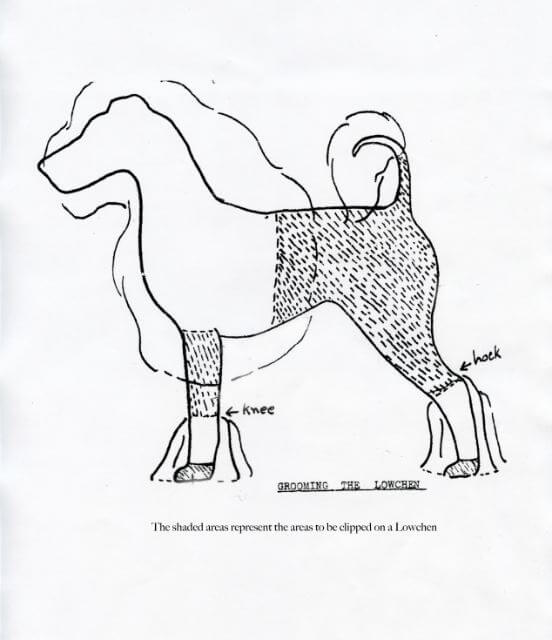
They are to cover ground and are allowed to converge slightly to the center line as speed is increased so do not accept a typical toy or terrier-like movement in the Löwchen. In summary, any qualified judge can judge any breed in general structure and basic movement. Understanding the “essence” of each breed is the challenge. The Löwchen standard clearly defines those characteristics that separate them from other breeds. Appreciating and understanding those points will allow judges to sort out an entry of Löwchen and find the one with the best breed type. After all, a mutt can be sound and well-structured, but without having the “essence” of a breed, what breed is it?
